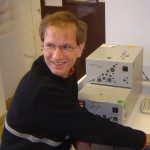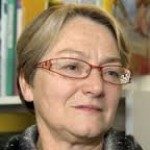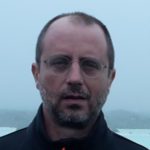Link to Pubmed [PMID] – 16367746
FEBS J. 2006 Jan;273(1):34-46
Dengue is a re-emerging viral disease, affecting approx. 100 million individuals annually. The monoclonal antibody mAb4E11 neutralizes the four serotypes of the dengue virus, but not other flaviviruses. Its epitope is included within the highly immunogenic domain 3 of the envelope glycoprotein E. To understand the favorable properties of recognition between mAb4E11 and the virus, we recreated the genetic events that led to mAb4E11 during an immune response and performed an alanine scanning mutagenesis of its third hypervariable loops (H-CDR3 and L-CDR3). The affinities between 16 mutant Fab fragments and the viral antigen (serotype 1) were measured by a competition ELISA in solution and their kinetics of interaction by surface plasmon resonance. The diversity and junction residues of mAb4E11 (D segment; V(H)-D, D-J(H) and V(L)-J(L) junctions) constituted major hotspots of interaction energy. Two residues from the D segment (H-Trp96 and H-Glu97) provided > 85% of the free energy of interaction and were highly accessible to the solvent in a three-dimensional model of mAb4E11. Changes of residues (L-Arg90 and L-Pro95) that statistically do not participate in the contacts between antibodies and antigens but determine the structure of L-CDR3, decreased the affinity between mAb4E11 and its antigen. Changes of L-Pro95 and other neutral residues strongly decreased the rate of association, possibly by perturbing the topology of the electrostatic field of the antibody. These data will help to improve the properties of mAb4E11 for therapeutic applications and map its epitope precisely.



